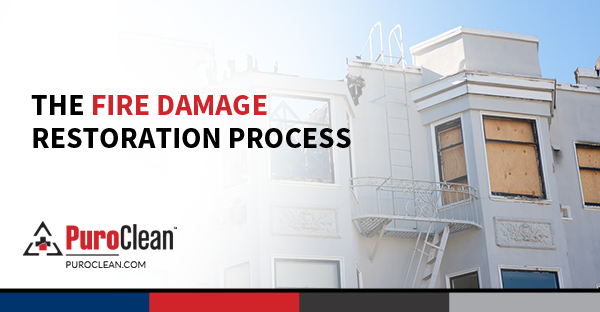Facing property damage after a disaster can be overwhelming for any business. Whether it’s a burst pipe flooding your office or a fire leaving extensive damage, dealing with these situations promptly is crucial. The faster the damage is assessed and addressed, the quicker your business can resume operations. Delays can lead to further issues, including secondary damage and increased costs.
Businesses in Michigan face unique challenges when it comes to property damage. The state’s weather patterns, including harsh winters and spring storms, can cause a variety of damage types. Understanding how to respond and who to turn to for restoration can significantly ease the recovery process.
Assessing the Damage
When disaster strikes, the first step is to assess the extent of the damage to your commercial property. Acting quickly can prevent further issues and expedite the restoration process. Here are some key steps:
– Ensure Safety: Before entering the premises, make sure it is safe. Look out for hazards like exposed wiring or unstable structures.
– Document the Damage: Take clear photos and videos from various angles. This documentation is essential for insurance claims and helps the restoration team evaluate the situation accurately.
– List Damaged Items: Compile a list of damaged equipment, materials, and other assets. Detail the condition of each item to aid in claims and restoration.
Understanding the importance of proper documentation cannot be overstated. Properly recorded information can significantly impact the speed and success of your insurance claims. Having a comprehensive record helps everyone involved and reduces the likelihood of disputes with insurers.
Once the initial assessment is complete, it’s crucial to contact a professional restoration company. They have the expertise and equipment to conduct a thorough evaluation, ensuring that all damage, even the unseen, gets addressed effectively.
Types of Commercial Damage Restoration Services
When disaster strikes, a variety of restoration services may be needed to get a business back on its feet. Understanding what’s available can help in selecting the right service for specific damage.
– Water Damage Restoration: Water can cause extensive damage to floors, walls, and ceilings. Whether from flooding or a burst pipe, professionals use specialized equipment to extract water and thoroughly dry the affected areas, preventing mold growth.
– Fire Damage Restoration: A fire can leave behind not just burn damage but also soot and smoke. Restoration experts clean and repair structural elements and ensure indoor air quality returns to safe levels.
– Mold Removal: Mold thrives in damp environments, often following water damage. Certified professionals tackle mold by identifying the source, containing the spread, and using antimicrobial treatments to remove it safely.
Each type of service is tailored to tackle the specific damage your property has suffered, ensuring a comprehensive recovery process.
Choosing the Right Restoration Company
Selecting the right restoration company can make a significant difference in how efficiently and thoroughly your property recovers. Here are some considerations:
– Experience and Reputation: Look for companies with a solid track record and positive customer feedback. A well-reviewed company often indicates reliable service and customer satisfaction.
– Local Expertise: It’s beneficial to choose a company familiar with the local area and its unique weather challenges. This knowledge helps in providing targeted solutions.
– Quick Response Time: Restoration is a time-sensitive process. A company that responds quickly to your call can minimize further damage and start the recovery sooner.
Remember, the company you choose will be your partner in navigating the recovery process, so trust and reliability are key factors.
Preventing Future Damage
Once a property has been restored, taking steps to prevent future damage is a wise move. While no one can predict every incident, proactive measures can mitigate risks.
– Regular Inspections: Conduct routine checks of roof and foundation conditions, plumbing, and electrical systems to catch potential issues early.
– Emergency Preparedness Plan: Develop a comprehensive plan that includes evacuation procedures and contact information for emergency services and restoration specialists.
– Ongoing Maintenance: Regularly service HVAC systems, clean gutters, and ensure proper drainage around the property to prevent future problems.
By implementing these measures, businesses can protect themselves from repeat disasters, saving time and money down the road.
Getting Your Business Back on Track
After addressing the damage, focus shifts to resuming operations. Doing this effectively requires patience and a well-thought-out strategy in getting everything up and running again.
Start by assessing what areas of your business can open the quickest, and focus efforts there first. Communicate with customers and suppliers about any delays and expected timelines. Transparency helps in maintaining trust and understanding during the recovery phase.
Finally, consider creating a disaster recovery plan if one isn’t already in place. This plan can outline steps for future incidents, ensuring that your business can recover smoothly no matter what challenges it faces. Taking these actions will help solidify longer-term stability and resilience.
Choosing the right partner for commercial damage restoration is a key step in getting back on track after disaster strikes. Trust the expertise of PuroClean of Howell for services that effectively address water, fire, or mold damage. Explore our commercial damage restoration options and let our team guide you through the recovery process, ensuring your business is safer and more resilient than ever.



